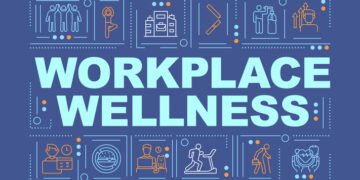PUMP UP YOUR WORKOUTS THE RIGHT WAY AND YOUR BODY WILL THANK YOU RIGHT TO YOUR BONES.
Bone health is as important as core strength and for women especially, health is important keeping your skeletal strength is a big part of lifelong fitness. As we all know, cardio may be king for many, but strength training really enhances your overall fitness levels, especially as you age. “Good bone health helps ward off osteopenia and osteoporosis, which can help decrease your risk of bone fractures,” says Pamela Mazzuca, an athletic therapist based in Toronto. “Strength training allows for global bone health if you train your whole body.”
In addition, what many women don’t realize is that even if you aren’t looking to build muscle, by gaining muscle strength you’re doing your body good in more ways than one. “One of the greatest benefits is that it improves your mood and your quality of sleep,” says Naomi Keane, owner of Calgary’s Oranj Fitness.
Use It or Lose It
When it comes to our muscles, research shows we lose muscle mass as we age. Women specifically often lose more muscle mass simply because many are not doing some type of regular strength training. According to Keane, strength training is a vital part of the mix when you’re looking to build bone density, and for a few reasons. “Resistance training puts strain on our bones and over time this strain helps to improve our bone density, making strength training even more of an ideal form of exercise as we age,” she explains. “Focus on increasing your weights over time, with lower reps to build your muscle strength and bone density.
Muscle Matters, Skeletal Strength Matters
When it comes to strength training, many women are afraid of gaining too much muscle too quickly. That said, studies have found that those who have increased their muscle mass are also strengthening their bones in and out of the gym. “Strength training provides the needed stimulus for your body to maintain and improve your bone density,” says Mazzuca. “In order to improve your bone density, your bones need to be stressed beyond day-to-day activities to stimulate new bone growth.”
Mazzuca also points out that specific exercises that target one area of the body, like running, only impact bone strength in the knees, hips, and feet, because the bones in these areas are under the impact of pounding the pavement. “That is why it is so important to strength train,” says Mazzuca. “Strength training allows for global bone-strengthening when you have a routine that trains your entire body.”
“If you are new to strength training, hire a personal trainer who can design a body-weight program and teach you the proper technique of each exercise.”
Reduce Your Risk
Strength training actually reduces your risk of developing osteoporosis and it’s never too late, to begin with a program. “It is important for women, especially as we age, for so many reasons ranging from physical to mental to emotional health,” says Keane. “As you continue to build muscles, your metabolic rate increases and your body will continue to burn increased amounts of fat, even after your workout is over.” Even if you’ve never picked up a set of dumbbells and are noticing the signs of bone loss if you start now you can still reap the benefits. In fact, numerous studies have shown that incorporating a regular weight-training workout can help slow the loss of bone density.
But that doesn’t mean you need to step inside a gym for better bones; according to the pros, regular weight-bearing physical activity can be enough. That’s right, lace up your kicks because a running, walking, or group fitness class can result in stronger, denser bones, and these activities target specific bones including the knee joint and ankles, which are common areas at risk of fracture as we age.
Break Tradition
No matter where you are in your fitness journey, there is a place for strength training in your routine. “If you are new to strength training, hire a personal trainer who can design a body-weight program and teach you the proper technique of each exercise.” An alternate option that Keane suggests is a total-body workout including four sets of 15 reps such as squats, lunges, and push-ups, which can be a terrific routine for anyone who travels or doesn’t have access to a gym.
















